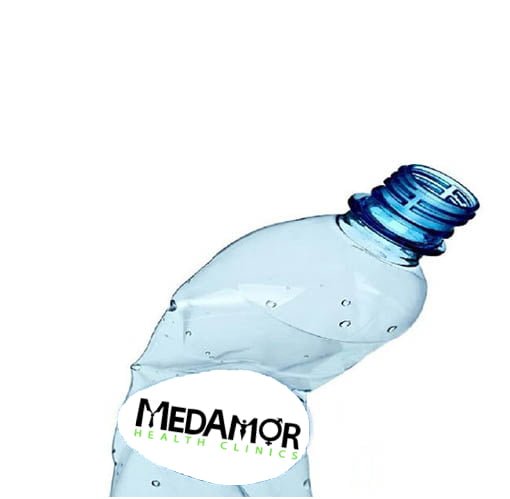
Peyronie's Disease Treatment
In Richmond Hill and Toronto
Looking for peyronie’s disease treatment in Toronto? MedAmor Health Clinic located in Richmond Hill offer peyronie’s disease treatment in Toronto covering Northern GTA areas Aurora, Barrie, East Gwillimbury, Markham, Orangeville, Richmond Hill, Newmarket, Uxbridge, Vaughan, Whitchurch-Stouffville, Bradford West Gwillimbury, Beeton, New Tecumseth, Angus, Innisfil, Shelburne, Sunderland, Beaverton and Collingwood.
Peyronie’s disease is a condition that is associated with an abnormally curved penis caused by non-malignant scar tissue formed on its surface and produces excruciating erections. It is known by the name of a french scientist, françois de la peyronie, who first introduced this disorder in 1743.
Confusing this disease with everyday symptoms is like mistaking a scientist’s lab coat for a fashion statement. But here is one distinctive feature that you should differentiate.
Male sexual organ has different sizes and shapes, with a minor curvature to either side. Contrarily, in the case of Peyronie’s disease, the penis is significantly curved with other associated symptoms.
Moreover, the development of Peyronie’s is a painful struggle in men. The disease may not subside on its own and may worsen. However, it is suggested that early intervention in treating the condition may prove beneficial in treating the condition and its associated symptoms, such as severe pain, shrinkage of the penis, abnormal curvature and related erectile dysfunction.
Let’s talk about the disease in detail. But before that, it’s necessary to get aware of the normal functioning of the penis so that you can differentiate the diseased state.
What Is The Anatomy And Physiology Of An Average Penis?
The paired tubes of the penis, called corpora cavernosum, are spongy ones, erect the penis and make it rigid by being filled with blood during an erection, and allow sufficient penetration during sexual intercourse. Correspondingly, the corpus sponigosum prevents the compression of the urethra during erection. The urethra carries the semen (fluid with sperm) into the vagina during a sexual practice.

What Signs Or Symptoms Exist In Peyronie's Disease?
- Pain, usually during sexual activity, erection or palpation of external genitalia
- Abnormally curved penis
- Erectile dysfunction (Usually 90% of men with Peyronie’s are associated with ED)
- Loose erections
- Presence of lumps or scar on penile tissue
- Uncomfortable sex caused by soft erections or pain
- Shortening or shrinkage of the penis
What the abnormal curvature of the penis suggests?
- If the scar tissue is formed on the dorsal side of the penis, it may bend upwardly during the erection.
- The formation of plaques or scar tissues on the lower side of the penis causes it to bend downwards or lateral.
- Sometimes the scar tissues may result in the narrowing of the penile shaft, caused by the formation of plaques around the penis tissue.
- In rare conditions, the formation of calcium-containing plaques around the penis may result in severe rigidity or hardening like a bone.
Etiology Of Peyronie's Diseases?
Genetic
It is reported that there is a liability of genetic predisposition in the development of peyronie’s disease.
Connective tissue and immune disorders
Peyronie’s disease is more likely if the person is suffering from a connective tissue or autoimmune disorder, i.e., Dupuytren’s disease, scleroderma or systematic lupus erythematosus.
Accidents
Accidents that damage the penile tissues can lead to PD.
Age-related PD
The aged individuals are more susceptible to developing the condition because the increasing age causes fragility of penile tissue. Moreover, the penis may become more prone to injuries and heals healing becomes slow.
Traumatic injury
The most likely cause of the development of peyronie’s disease is an occurrence of blunt trauma caused by mechanical stress of tunica albuginea or trauma to microvessels.
How can this happen?
It usually happens during vigorous sexual intercourse or a sudden blow to the penis caused by the female pubic bone. It usually occurs during wrong sexual positioning, which may result in sub-tunical bleeding, accumulating fluid and forming scar tissue as a result of a fibrotic reaction that creates plaque.
Pathophysiology of Peyronie's disease
- Acute Inflammatory Stage:
The first stage of Peyronie’s is termed an acute inflammatory stage. This stage initiates an acute inflammatory process after the trauma to the penis. The inflammation leads to an increased proliferation of fibroblasts, forming scar tissue (plaque) over that specific penile region, leading to pain, an associated symptom of Peyronie’s disease. This stage lasts for a few weeks to several months. It is estimated that after the onset of the disease, it usually goes after 12 to 18 months.
- Fibrotic Stage:
The second stage of Peyronie’s disease begins after the inflammation is gone and the situation becomes more stable. At this stage, the plaque hardens and becomes more pronounced, which may cause a distinctive curve development in the penis, especially during erection. The curve either remains the same or worsens over a period of time.
According to research it is reported more in older people that during the first six months of signs and symptoms, men suffering from Peyronie’s are more likely to recover from the malformations produced.
- Chronic Stage:
In this stage, the fibrotic plaques get dense due to calcification. Pain disappears, but the abnormal curvature of the penis remains; this may lead to a problematic intercourse relationship.
How To Diagnose Peyronie's Disease?
The physical examination of a patient with peyronie’s disease includes the following steps:
- Visual assessment of Penis:
The physician might ask the patient to bring visual images of an erected penis or may observe it under direct examination using vacuum assisted erection test. This will help the doctor understand the level of erection, the assessment of penile curvature that helps to locate the exact position of the scar tissue.
- Physical examination using palpable test:
In the palpable examination, the physician might palpate the penis to assess the location and degree of plaques in penile tissue. Your doctor might initiate the investigation with a routine genitourinary assessment. The physician might measure the length of plaque during the erection. Except from that, the curvature and circumference may also be observed.
- Observation of hands and feet:
The doctor might observe the patient’s hands and feet to rule out Dupuytren’s contracture or Ledderhose scarring, diseases associated with the formation of nodules or lumps, which are risk factors for developing Peyronie’s disease.
- Ultrasonography:
The doctor might also order a penile ultrasonography to examine the penis with the help of imaging and assess the calcification level of plaques around the penile tissue.
Treatment Of Peyronie's Disease
The type of oral therapy conducted depends upon the presence of relevant symptoms.
Other treatment methods involve topical gel administration and intralesional injection therapy, etc.
When the penis is abnormally curved, due to peyronie’s disease, it can lead to painful sex. Sometimes the treatment procedures can be painful or uncomfortable for the patient.
But MedAmor led you to the solution!
The procedure MedAmor presents for the treatment of peyronie’s diseases is noninvasive, comfortable Low-Intensity Extracorporeal Shock Wave Therapy (LI-ESWT) in combination with other convenient methods.

How Does Extracorporeal Shock Wave Therapy (LI-ESWT) work?
How?
Here is the answer to your query!
The low-frequency sound waves produced by the extracorporeal shockwave therapy device target the region of tissue containing plaque. These waves when target the specific affected region, break down the fibrotic tissue and help straighten the penis by provoking the healing process inside the penile tissue.
Besides this, it also helps alleviate pain caused by the disease. The procedure is combined with other physical methods and devices to achieve the best result. In Peyronie’s disease, effective results are obtained using both focused and radial shockwave therapy.




